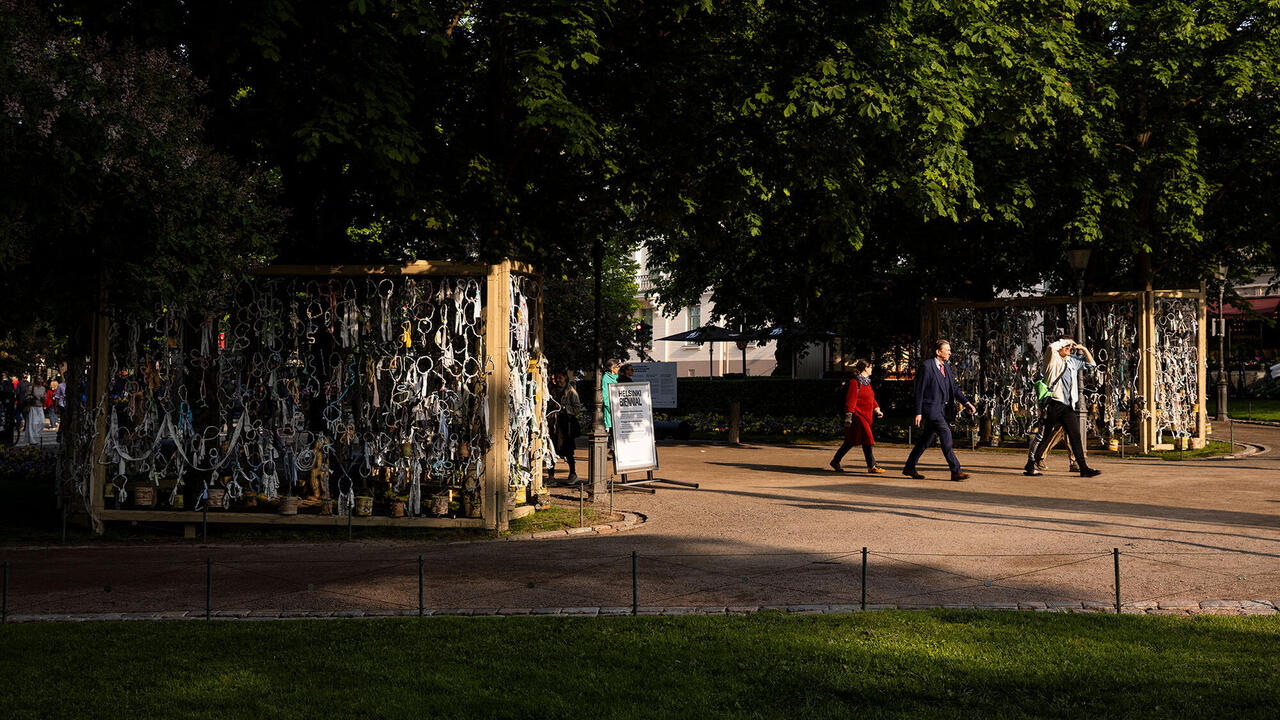Catherine Opie
Much lip service has been paid to the notion of queer space, culminating last June in a show at the Storefront for Art and Architecture in New York. The idea of affixing one's identity to a specific environment or locale has been a staple of the cultural studies genre ever since cultural studies went pop. Over the past two decades, artists like Judy Chicago, Pepon Osorio and Alice Aycock have navigated the cross-currents of location and identity. At best, the way that one informs the other is tenuous when addressing the spaces that queers use.
Generally queer space falls into two categories. There are the private spaces - bars and bedrooms - which borrow, iconically, from the popular imagination. Think of the Country & Western bar, or the more current techno-rave scene every new gay bar seems to have plugged into. The stainless-steel-iron-bar-concrete-floor-mirrored-wall decor that marks this new form mirrors the AIDS era of sculpted-body, shaved-head clones that have demarcated queer iconography for the last decade. The other queer space is more traditional and less iconic. It is the public space that queers have traditionally borrowed and transformed at night or in shadowy daytime. The public parks or alleyways, where sideways glances became historical trysts, are spaces that have been co-opted from straight culture by queers - as if to reiterate that public space is our space too. But also to say that these most public of spaces are the only places we have.
Catherine Opie's new series of work is a strangely formalist meditation on these borrowed public spaces. She has redefined the public persona of its marginalised inhabitants in portraits of those who straddle queer and freakish culture. The photographs, with their brownish-grey tints, immediately feel as if they belong to history. The metaphor of the subjects, despite the heaviness of the structures that surround them, manages to come across as light and almost romantic. Perhaps, as in the brat-pack, schlock-picture Where the Day Takes You, the real subjects of Opie's portraits inhabit these underpasses while the actors who portray them zip by in their B'mers overhead. Actually, the denizens of Opie's world mostly zip by overhead also but, due to their enforced 'other' status, most straights would like to keep them huddling in the underpasses.
Opie explores a lush and immediate metaphor: that of a misty-eyed, mythical California which is urbane, glamorous and always on the go versus a California which is always in the background, heavy and immobile. Her photographs are intensely mannered in their insistence that these urban architectural structures matter. Opie's next project is rumoured to be a study of houses in Los Angeles and San Francisco, which would seem to fit easily between the highways and portraits, offering an easier critical context.
















